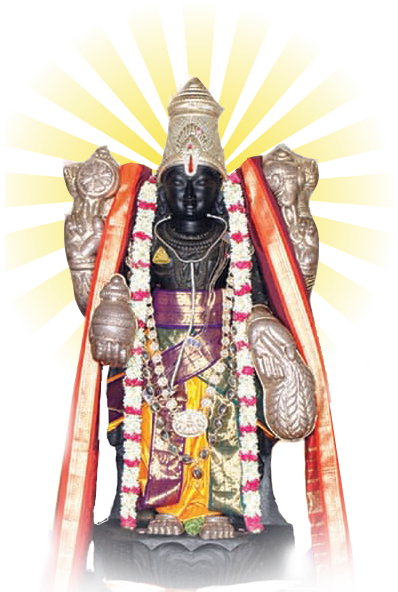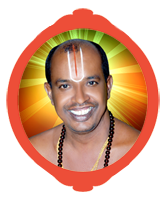Ashta Kaala Bairavar

Benefactor of self-confidence - Ashta Mangala Kaala Bairavar As has been the experience all along with Swamigal, he got a calling from the Sugara Nadi reading to establish the Lord Ashta Mangala Kaala Bhairavar.
Kaala Bhairavar is one of the manifestations of Lord Siva who represents the march of time. Bhairavar is usually the fierce aspect of Lord Siva, who transmutes energy in order to recreate. This is governed in a time frame. Time (not only of human life but also of countries and planets), is overseen by ensuring the phenomenon of impermanence.
Hymns on Kaala Bhairavar highlight a truth - Time is the most precious. Time lost is lost forever. Wise people should use every moment of time effectively.
At the Danvantri Peedam, the concept engulfs the auspicious aspect of Bhairavar â Mangala Bhairavar â in His eight manifestations. The eight manifestations stand alongside the main idol, which will stand four feet tall. The Ashta Mangala Bhairavars are Kala Bhairava, Asitanga Bhairava, Samhara Bhairava, Ruru, Bhairava, Krodha Bhairava, Kapala Bhairava.
Rudra Bhairava and Unmatta Bhairava.
Kaala Bhairavar is worshipped as the guardian of sanctum sanctorum. The keys to such an abode are ceremoniously placed at His feet after closing the doors. They are taken only with His permission to open doors on the following day. Kaala Bhairavar enables one to discover the true purpose of one's time on Earth. Kaala Bhairavar is the protector of pilgrims and travellers. He is invoked before a journey, to help reach one's destination safely. He is also the keeper of liberation. His installation is on the Chathurthi day of the waxing moon, as dictated by the Sugara Nadi. Lord Ganesha is first propitiated with 100,000 modakas, and then the installation is carried forth.
First of its kind
The installation begins on the full moon of the month of aippasi (OctâNov). There are five days of homams, a daily modaka abhishekam for Lord Ganesha, culminating on the Sankatahara Chathurthi. The modakas are offered to the Lord of fire in the Homa Kundam, which has been burning uninterrupted since 2005.
Modakas are fried dumplings made with jaggery, coconut and rice flour. It would be the first time in the country that Lord Ganesha is propitiated in this manner - a unique and much-revered spectacle.





